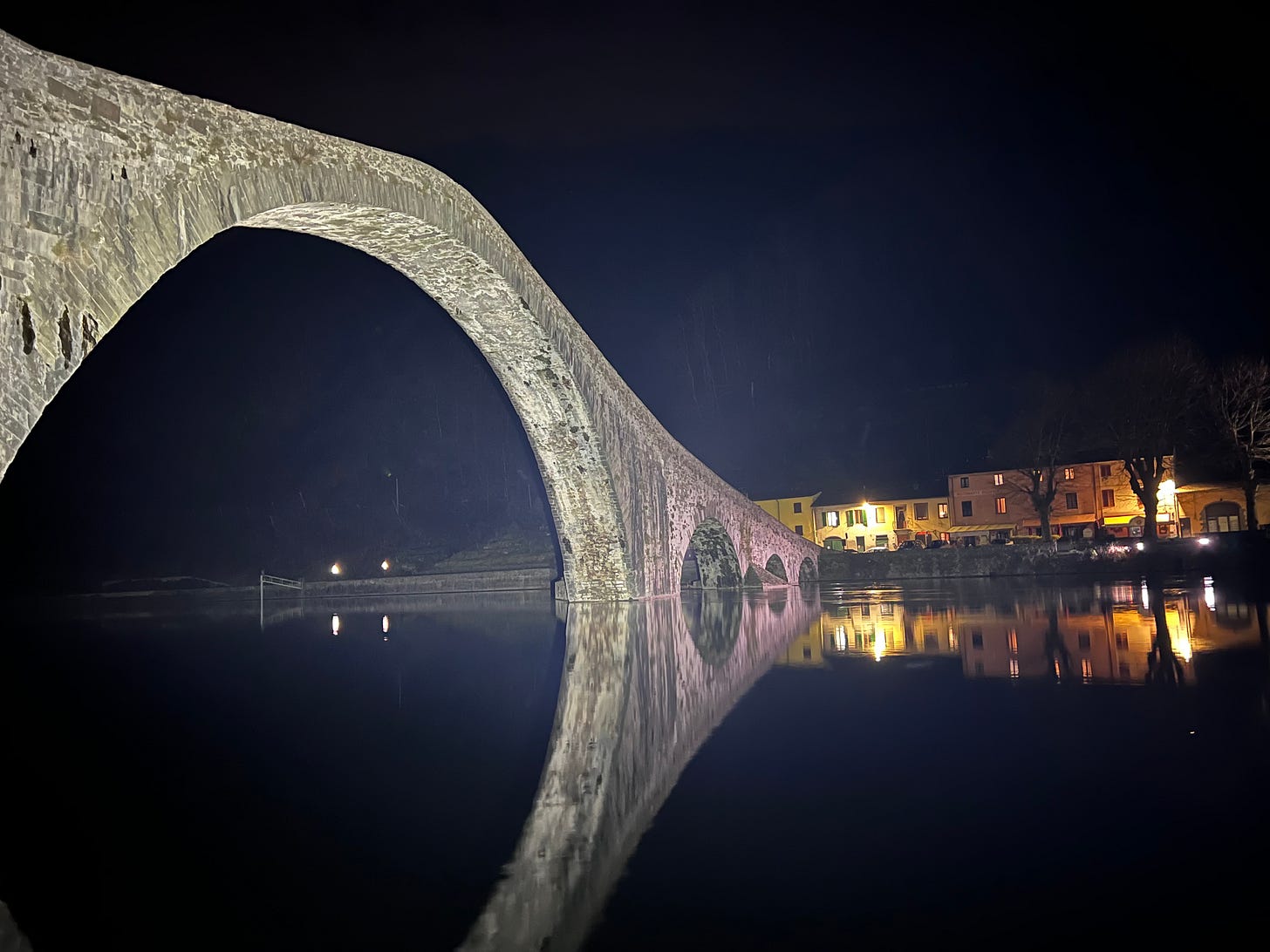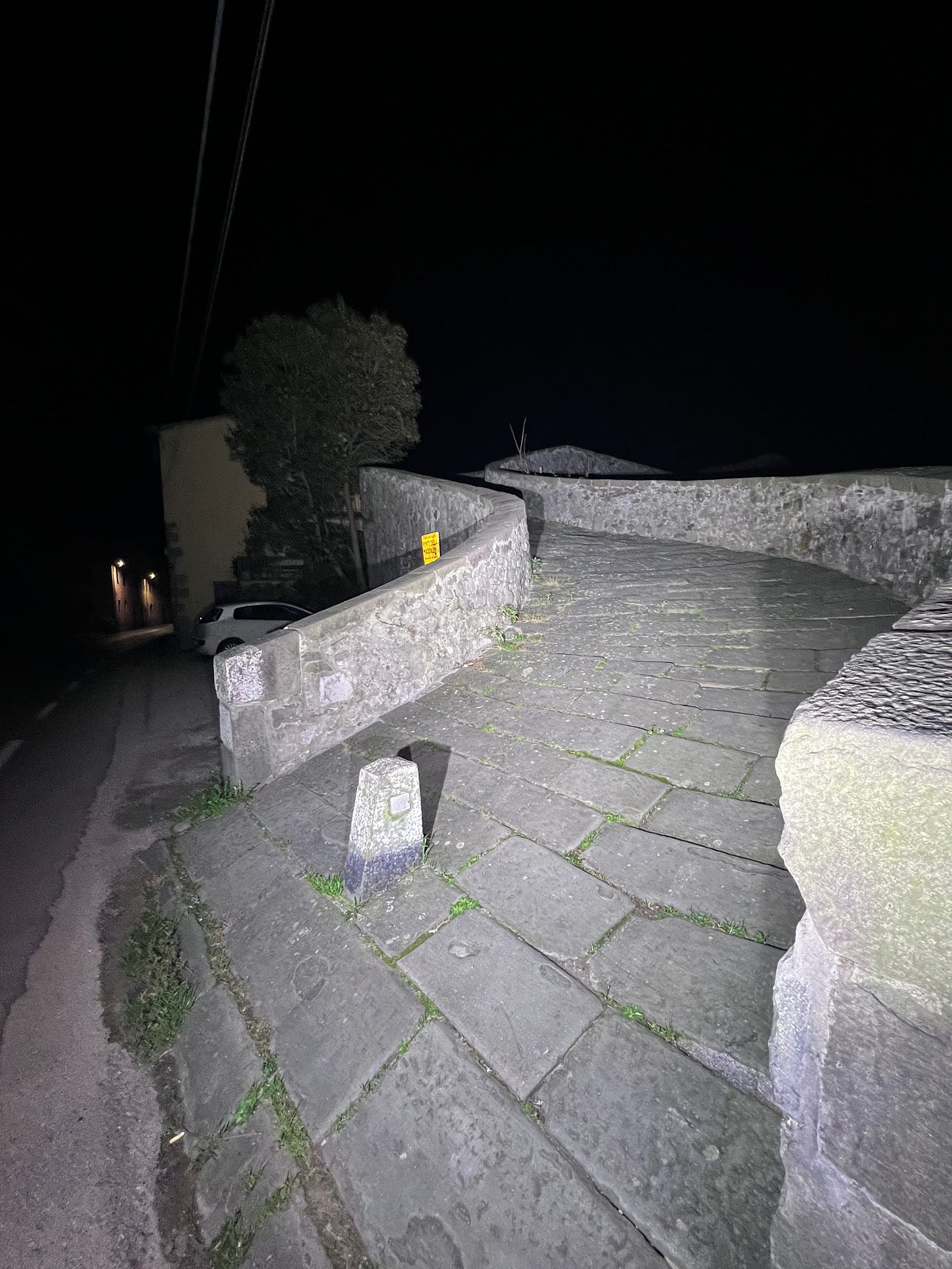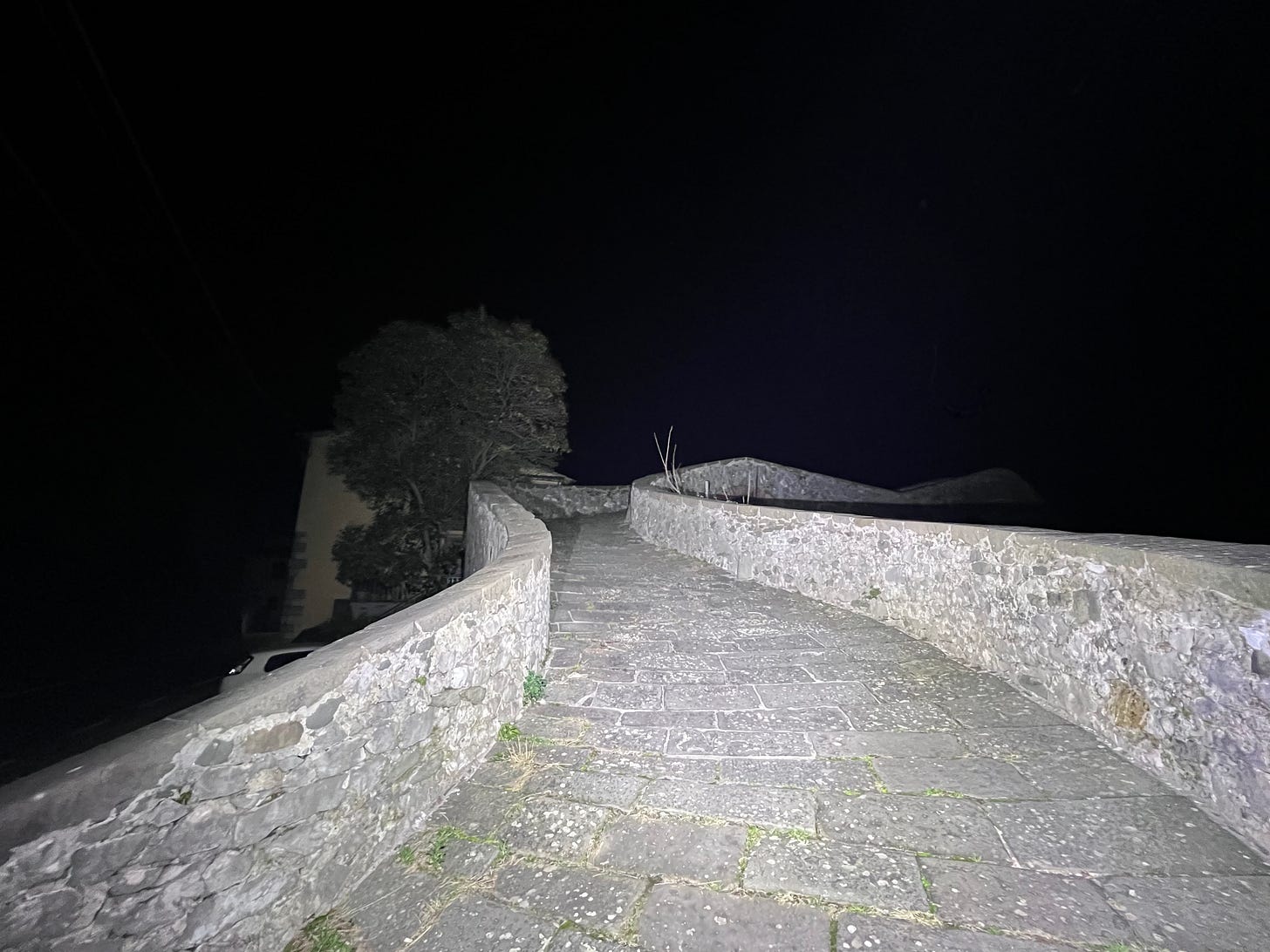I’m on the Gothic Line. Hunting down stories about the mapmakers. And it's dark - I mean it's really, really dark; the mountains are deeper than dark. Even the iPhone was complaining, it's far too dark to take decent pictures, but the results (above) weren’t bad when I fiddled with the buttons a bit.
Tomorrow, I'll be back with a digital tape measure to gauge the precise width of that bridgeL the Ponte di Maddalena, better known as the Devil’s Bridge at Borgo a Mazzano, just north of Lucca.
There are several devil bridges in Europe, each with its own legend often tied to local beliefs. This one was built in the 11th century, and it's quite the sight as you drive north , but its significance isn’t just architectural – it's cultural too. There are several versions of the legend. The most popular account tells how Saint Julian (Giuliano) volunteered to build a crossing over the Serchio River, but soon realised he'd bitten off far more than he could chew. Being quite a canny chap, he summoned Beelzebub, and asked if there was any chance of a deal.
The Devil went all in: he'd complete the bridge overnight on the condition Julian would give him the soul of the first being to cross it. And then on completion, Julian coaxed a dog across, which hacked Old Nick right off. Infuriated by the villagers' mockery, the Devil threw himself off the bridge into the waters of the Serchio River below, never to be seen again. As to 'Ponte di Maddalena' – there's a hermitage on one side, dedicated to Saint Mary Magdalene (Santa Maddalena).
In 1944, the bridge was left intact by not only the troops embedded in the hillsides but also the remaining Todt engineers, still living and working in the area. Everyone thought it was too narrow for an armoured attack. However, while I was checking out the background to map stories on and around the Gothic Line, I found at least one reference to Sherman tanks managing to cross this bridge. As you can see, I had my doubts. It’s steep. And there’s quite a twist in it, at the eastern end. In fact, I'd put the whole thing down to urban myth, but the bridge’s potential this evening seems all too real.
In late 1944, with every other bridge in the region destroyed by retreating German troops, this was one of the few remaining bridges left over the Serchio River. For anyone fighting in this area, it was more than just a physical landmark – it was a psychological marker of the region's defences. I think it might have been General Mark W. Clark, commander of the U.S. Fifth Army, who later said: “The mountains have a way of becoming a challenge not just to strategy, but to the will of the men fighting beneath them.”
Somebody much wiser than me has said that the width of a Sherman tank would be less of a problem than its weight, but having crossed the bridge in the dark this evening – steady, now – actually, I don't think the load-bearing capacity is an issue. It’s width. That’s the key.
Tomorrow we'll find out.






Looking forward to learning what you discover.